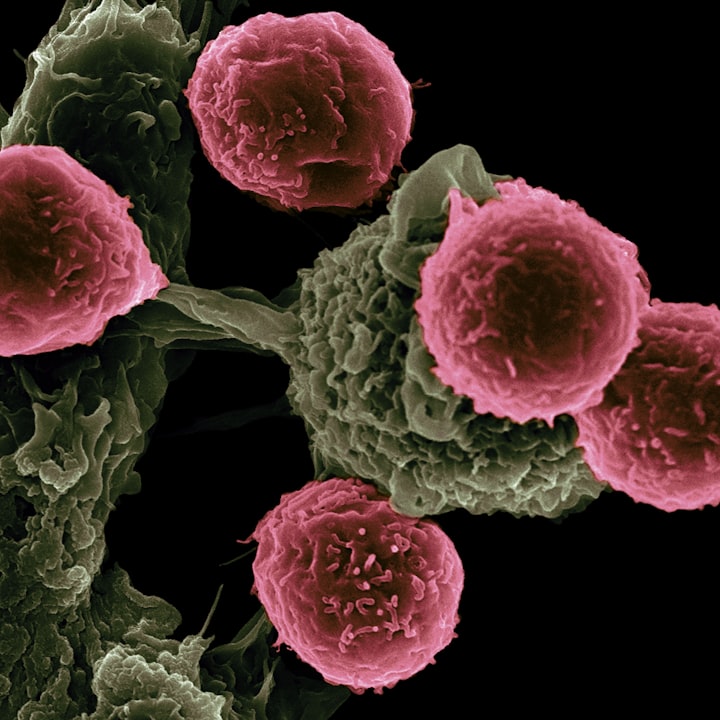Cervical cancer is one of the few that affects young women in their prime of reproductive power. At the same time, it is this type of cancer that can be prevented today. How can this be done?
Cervical cancer is one of the few that affects young women in their prime of reproductive power. At the same time, it is this type of cancer that can be prevented today. How can this be done? What new system of prevention and control of invisible diseases?

At-risk groups
Cervical cancer is perhaps the only type of cancer today with a clearly defined cause. She recognized the human papillomavirus, or HPV for short. And if this is so, it means that the disease can be controlled and prevented from developing.
Papilloma virus is transmitted by contact with skin and mucous membranes. Mainly through sexual contact, often during the first intimate relationship.
Up to 80 percent of women can be infected with this virus at various times in their lives. However, not everyone develops precancerous changes in the cervix and even more so true cancer. Why?
For the papilloma virus to cause cancer, several conditions must converge.
First, a woman doesn't just get the virus. It stays in the body for more than two years instead of leaving it - as it happens in most people. Moreover, it is not simply preserved, but is introduced into the genome of the cell. This is facilitated, first of all, by low immunity. The presence of bad habits. Early onset of sexual activity and a large number of partners in the future.
Pregnancy and childbirth at a young age also help the virus. A factor such as taking contraceptives for more than five years. And also - damage to the cervix during gynecological interventions and traumatic childbirth.
But the most important factor that increases the risk of cancer in the presence of HPV is concomitant intimate infections. Mycoplasma, ureaplasma and chlamydia.
Now specialists all over the world pay attention to such a union.
Dangerous combinations
Microbes change the vaginal flora, suppress local immunity. They cause inflammation of the cervix - cervicitis. All this becomes a background favorable for the introduction of papillomavirus.
Ureaplasma interacts so cleverly with HPV that it triggers its cancer potential. Mycoplasmas accelerate the appearance of atypical cells in the cervix.
As for chlamydial infection, it was recognized as a risk factor for precancer 20 years ago. But only recently it became known that the union of HPV and chlamydia starts these processes much faster. Therefore, it is so important to timely identify and treat these infections.
Traditionally, antibiotics are used for this - one or two drugs, for 7-10 days. Among other drugs, doctors today are more likely to choose josamycin. Mycoplasma, ureaplasma, and chlamydia are sensitive to it. There is evidence that this drug also has an immunomodulatory effect. This is important in conditions of low immune status.
Triple prevention
Most primary cases of HPV infection are asymptomatic. Even precancer and cancer itself are invisible diseases, do not manifest themselves in anything. Therefore, the only way to detect changes in time is to be periodically examined.
Today, a strategy for triple prevention and control of the disease has been developed. Primary prevention includes HPV vaccination. As well as education about the dangers of infections and smoking.
Secondary prevention includes the screening and treatment of precancerous conditions of the cervix.
Tertiary prophylaxis is carried out if the disease has already been identified. Its essence is the competent treatment of the identified focus. Surgery, chemotherapy, radio waves are used.
It is worth dwelling on each of the points separately.
Papilloma vaccines
Previously, only adolescent girls 9-15 years old were vaccinated against the papillomavirus. It was believed that the vaccine would work only if it was administered strictly before the onset of sexual activity.
But today the age range has been extended up to 45 years. The fact is that vaccines contain several strains of the virus at once. And if a woman by the time of vaccination is already infected with one of them, then the vaccination will protect her from other dangerous strains.
Two HPV vaccines have been registered in Russia - bivalent and tetravalent. Moreover, the second protects not only against two viruses that cause cancer. But also from two more types of HPV, responsible for the appearance of intimate warts.
And abroad there is already a nine-valent vaccine. It provides protection against nine types of virus simultaneously. In the countries of the European Union and the United States, it has been used for three years.
Today, doctors have come to the conclusion that not only girls and women need to be vaccinated against HPV, but also boys and men. After all, it is men who infect women with this virus. And they themselves also suffer from it. Cancer of the penis, mouth and larynx, intimate warts - all this is also a consequence of the insidious HPV.
The vaccination schedule depends on the age. Girls and boys under 15 are given the vaccine twice. At an older age, you need to be vaccinated three times already.
A huge number of countries - 86 countries around the world - have included the HPV vaccine in their national calendars. In Russia, unfortunately, vaccination against cervical cancer is not yet included in the calendar. But many regions are solving the problem on their own. As many as 30 regions carry out vaccinations at the expense of regional budgets. We have accumulated quite a lot of experience in the Moscow region. Since 2007, over 10 years, 22 thousand girls have been vaccinated here. The results are impressive. The incidence of intimate warts alone decreased 2.5-3 times.
Major analyzes
The second level of protection against cervical cancer is screening. It is addressed to all women who have an intimate life, starting from the age of 21. Previously, it makes no sense to conduct it, since the papilloma virus in youth often leaves the body on its own.
Screening consists of a smear test for HPV and a cytological PAP test.
The HPV test detects specific types of virus and their number. This allows you to decide whether to fight or observe. And in a smear for cytology, doctors assess the nature of the cells - normal or altered.
In this case, it is worth adhering to this algorithm. If the virus is not detected, and the cervix is not a cause for concern, then the next screening can come in 5 years.
If the virus is present and the cervix is in order, you are only released for three years. It is possible that during this time HPV will go away without any treatment. Especially if you are young and have strong immunity. But if that doesn't happen, it's important to see if the virus has caused harm. Indeed, in three years the first changes may well develop. And it is important to prevent their further growth.
Cell prognosis
It is quite another matter if, according to the results of screening, both HPV and atypical cells are found in a woman. Then the cervix is examined in more detail, under a microscope, by colposcopy. Cells are taken from the most suspicious areas of the organ. Their analysis will allow you to accurately diagnose whether it is benign neoplasia, precancer or cancer. In addition, today you can take an analysis for tumor markers ki16 and p67. According to them, doctors give a forecast about the further course of the process.
Then individual treatment is selected. The affected areas are removed using one of the modern methods. This can be ablation, excision, or conization of the cervix. The techniques differ in the degree of intervention and technology. Their choice depends on the condition of the cervix, age and reproductive plans of the woman. The younger the patient, the more gentle the effect is practiced by the doctors.
The insidious virus is also destroyed during the procedure. True, after it, the risk of re-infection remains. The woman has reduced immunity, the cervix is vulnerable. And any infections take root easily. For this reason, after any manipulations, it is necessary to temporarily exclude intimate life or use barrier protective equipment.
It is also useful to be vaccinated against HPV immediately after radical treatment. This will allow you to forget about problems with the cervix for a long time, or even forever.
Mom with dad and the Lord God
Life is given -
Take care, do not waste!
To make a malignant plan of cancer
Didn't let her take it away.
We were carried under a fiery heart
We were fed breast milk
And warm with great love
We happened to be in infancy.
Gone are those young years
But not the light of motherly love!
Always be healthy, my daughter
And live a happy life.
All treacherous pits and risks
You and I will bypass
Prevention, knowledge, vaccination
And a prayer for a good mood.
Daughter, girl, woman, mother -
You will pass your hypostases.
Just run away from sin and temptation
On the winding roads of the Earth.
To make a malignant plan of cancer
Didn't dare to take this paradise -
Work hard! And hoping for God
Believe in Love. Trust the doctors.






Comments
There are no comments for this story
Be the first to respond and start the conversation.